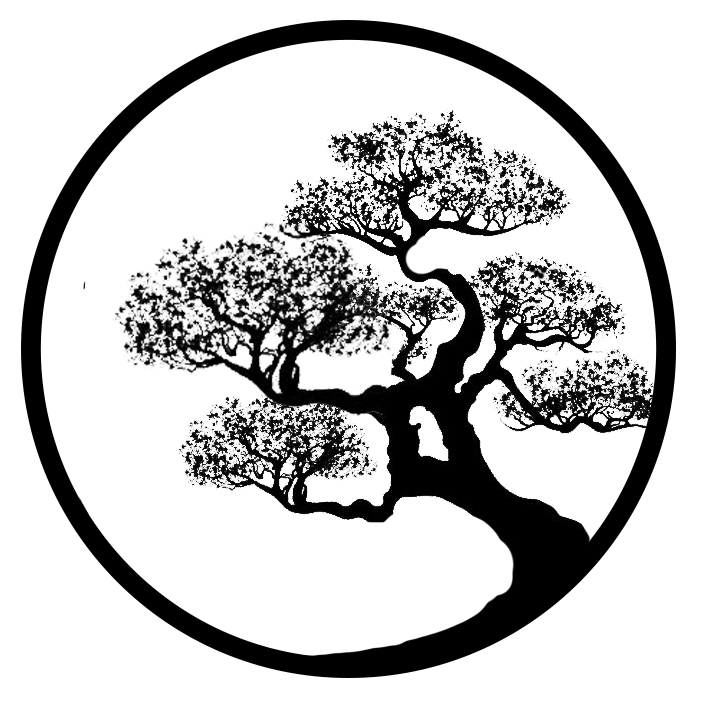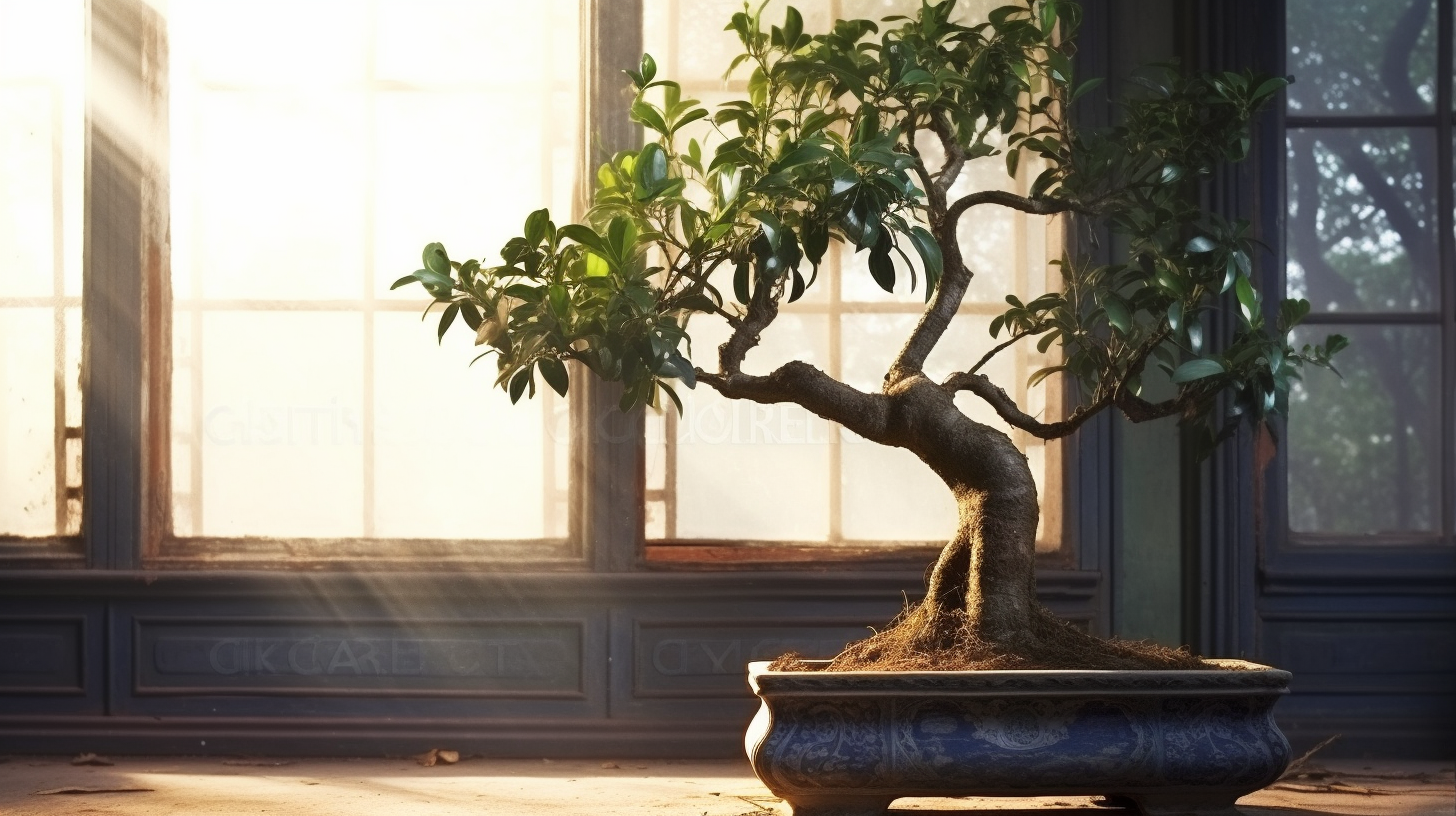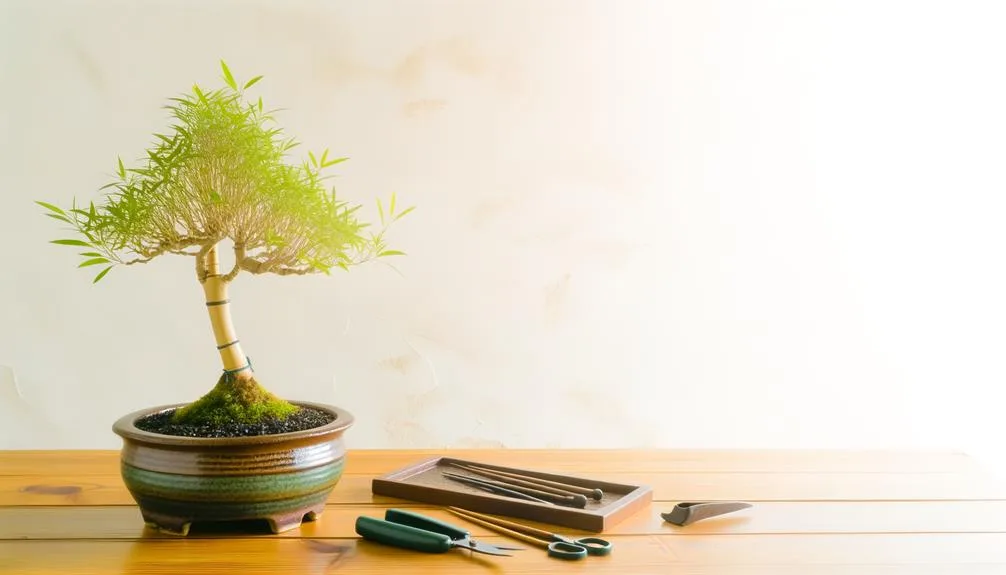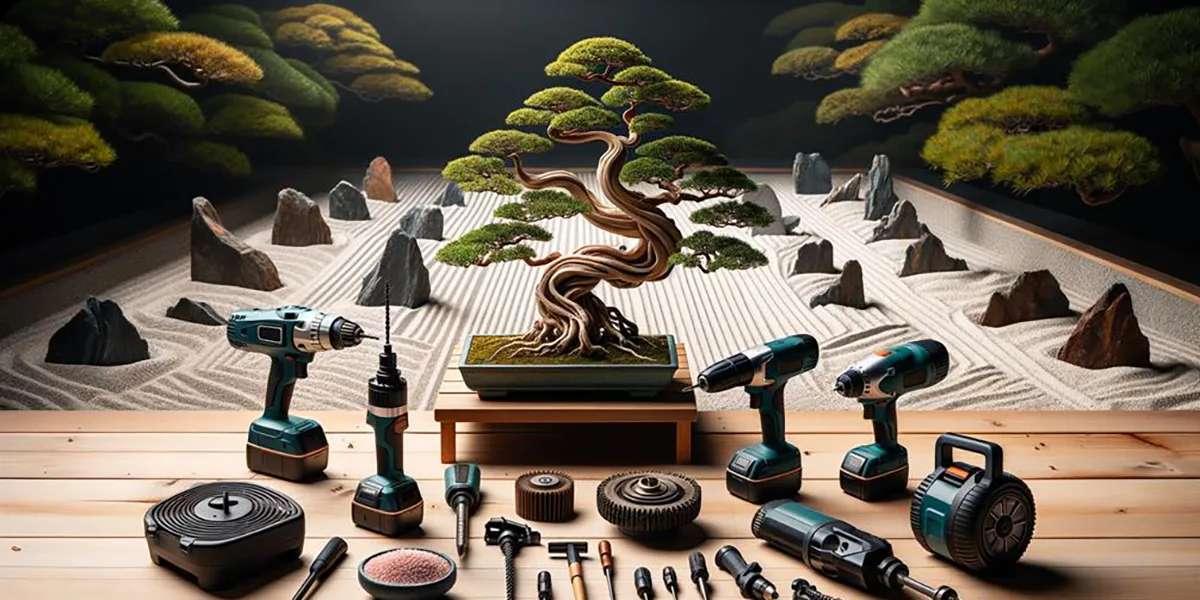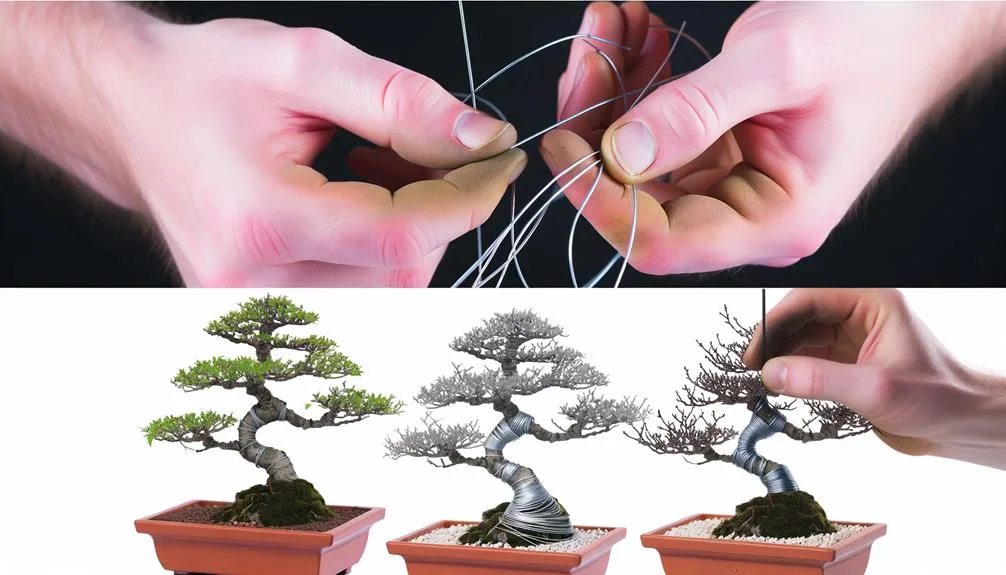Ficus Bonsai Tree
Ficus Bonsai Tree – Among the myriad of bonsai varieties, it stands out as a popular and versatile choice for both beginners and seasoned enthusiasts. Bonsai, an ancient art form that originated from Japan and China, has been a symbol of harmony, peace, and balance for centuries.
Origin and Popularity
Ficus Bonsai trees, with their roots in the tropical regions, belongs to the Moraceae family. This family is vast, with the Ficus genus alone boasting between 800 to 2000 species. The adaptability of the Ficus Bonsai to various indoor conditions, coupled with its aesthetic appeal, has contributed to its widespread popularity.
Differentiating Ficus Bonsai from Other Bonsai Trees
Ficus Bonsai Trees are known for their ability to produce aerial roots, giving them a distinctive and captivating appearance. These roots, when reaching the soil, can transform into strong pillar-like trunks, adding to the tree’s allure. Additionally, the Ficus Bonsai’s leaves have a unique feature: pointed tips from which rainwater drips off, a testament to its tropical origins.
The journey of exploring the Ficus Bonsai tree is filled with fascinating discoveries. From its rich history to its unique botanical features, every aspect of this tree resonates with the essence of nature’s beauty and resilience.
“Exploring the Ficus Bonsai is like reading a thrilling novel, where every page holds a new and fascinating discovery about nature’s resilience and beauty.”
Understanding the Basics of Bonsai Tree Care
Bonsai trees, despite their miniature size, are living entities that require attention, care, and understanding. Proper care ensures that these trees not only survive but thrive, showcasing their beauty and elegance. The Ficus Bonsai, like all bonsai trees, has specific needs that, when met, can turn it into a stunning piece of living art.
The Importance of Proper Care
Bonsai Ficus vs. Regular Bonsai: While the basic principles of bonsai care apply to all types, the Ficus Bonsai has certain unique requirements. Its tropical origin means it’s accustomed to consistent warmth and humidity. As such, understanding its natural habitat and mimicking those conditions, especially if you live in a temperate zone, is crucial for its well-being.
Common Misconceptions about Bonsai Trees
Debunking Bonsai Myths: One common myth is that bonsai trees are genetically dwarfed plants. In reality, they are regular trees cultivated to remain small through specific techniques. Another misconception is that bonsai trees should be kept indoors. While the Ficus Bonsai is an indoor variety, many bonsai trees thrive outdoors. It’s essential to research and understand the specific needs of your bonsai type.
Caring for a Ficus Bonsai, or any bonsai tree for that matter, is a rewarding experience. It’s a blend of art and science, where understanding the tree’s needs and providing for them results in a masterpiece that’s a testament to nature’s beauty and the caregiver’s dedication.
Ficus Bonsai Tree: A Deep Dive
The world of bonsai is vast and varied, with each tree species bringing its unique charm and characteristics. Among them, the Ficus Bonsai stands out, not just for its beauty but also for its adaptability and resilience. Let’s delve deeper into understanding this remarkable tree.
Unique Features of Ficus Bonsai
The Ficus Bonsai is renowned for its glossy, dark green leaves that add a touch of freshness to any setting. But beyond its visual appeal, the tree has several features that make it a favorite among bonsai enthusiasts. One such feature is its ability to produce aerial roots, which, when nurtured correctly, can hang down and form new trunks, giving the tree a multi-layered, forest-like appearance.
Ficus Ginseng: A Special Mention
The Appeal of Ficus Ginseng: Ficus Ginseng is a variety of the Ficus Bonsai known for its thick, pot-bellied trunk that resembles the Ginseng root. This tree, often grafted with Ficus microcarpa leaves, combines the aesthetics of two different trees, resulting in a unique and captivating appearance. Its stout trunk and dense foliage make it a standout in any bonsai collection.
The Aesthetics of Ficus Bonsai
The Ficus Bonsai’s aesthetics lie in its versatility. Whether you’re aiming for a windswept look, a cascading style, or a more traditional upright form, the Ficus Bonsai is adaptable. Its ability to produce aerial roots adds another dimension to its design possibilities, allowing for creative styles like the root-over-rock or the banyan style.
Exploring the Ficus Bonsai tree is akin to embarking on a botanical journey. Every twist of its trunk, every leaf, and every root tells a story of nature’s wonders and the artistry involved in nurturing it.
Watering Your Ficus Bonsai
Watering is a fundamental aspect of bonsai care, and the Ficus Bonsai is no exception. Proper hydration ensures the tree’s health, vitality, and longevity. However, it’s not just about watering but doing it right.
How Often to Water
Water Your Ficus: Best Practices: The frequency of watering a Ficus Bonsai depends on several factors, including the tree’s size, the pot’s size, the soil type, and the environment. While it’s essential to keep the soil moist, overwatering can lead to root rot, a common issue with bonsai trees. A simple finger test, where you insert your finger about an inch into the soil, can help determine if the tree needs water. If the soil feels dry, it’s time to water; if it’s damp, wait a day or two.
Signs of Overwatering and Underwatering
Overwatering and underwatering can both have detrimental effects on your Ficus Bonsai. Signs of overwatering include yellowing leaves, a musty smell from the soil, and mold growth. On the other hand, underwatered trees may have dry, brittle leaves and a lighter pot weight. Regularly checking the soil moisture and adjusting your watering routine accordingly can prevent these issues.
Best Practices for Watering Indoor Bonsai Trees
For indoor Ficus Bonsai trees, it’s crucial to mimic their natural tropical environment. Using a water tray filled with pebbles beneath the pot can help maintain humidity. When watering, use room-temperature water and ensure it reaches the tree’s roots. It’s also beneficial to occasionally mist the leaves, replicating the tropical humidity the Ficus Bonsai is accustomed to.
Proper watering is more than just a routine; it’s an art that requires observation, understanding, and a touch of intuition. By paying attention to your Ficus Bonsai’s needs and adjusting your care accordingly, you ensure its health and beauty for years to come.
Pruning Your Ficus Bonsai
Pruning is an essential aspect of bonsai care, allowing you to shape the tree, maintain its size, and promote healthy growth. For the Ficus Bonsai, regular pruning not only enhances its aesthetic appeal but also ensures its vitality.
When and How to Prune
Prune Your Ficus for Optimal Growth: The best time to prune a Ficus Bonsai is during its growing season, typically spring and summer. This allows the tree to heal faster and continue its growth cycle. When pruning, always use sharp bonsai scissors or pruners to make clean cuts. Start by removing any dead or yellowing leaves. Then, focus on shaping the tree by trimming branches that don’t fit your desired design. Remember, pruning is both a science and an art; while you want to promote the tree’s health, you also want to maintain its aesthetic form.
Tools and Techniques
Investing in quality bonsai tools can make the pruning process smoother and more efficient. Bonsai scissors are ideal for trimming leaves and small branches, while concave cutters are perfect for removing larger branches, leaving a hollow wound that heals with minimal scarring. When pruning, always cut just above a leaf node, ensuring that new growth will sprout in the desired direction.
Ensuring Healthy Growth Post-Pruning
After pruning, it’s essential to provide your Ficus Bonsai with the care it needs to recover and thrive. Ensure it receives adequate water, but be cautious not to overwater. Fertilizing a few weeks post-pruning can also give the tree the nutrients it needs to promote new, healthy growth.
Pruning is more than just cutting away unwanted growth; it’s about understanding the tree’s needs, envisioning its potential, and nurturing its beauty. With patience and care, your Ficus Bonsai will continue to flourish, reflecting the time and love you’ve invested in it. Repot Your Ficus
Repotting is a vital aspect of bonsai care, ensuring the tree’s roots have ample space to grow and access to fresh, nutrient-rich soil. For the Ficus Bonsai, periodic repotting not only promotes its health but also allows for inspection and maintenance of its root system.
Recognizing the Need to Repot Your Ficus
When to Repot Your Ficus: A Ficus Bonsai typically requires repotting every two to three years, but this can vary based on the tree’s growth rate and the size of the pot. Signs that your Ficus Bonsai may need repotting include roots growing out of the drainage holes, water taking longer to drain, or the tree becoming top-heavy and unstable. Additionally, if the soil appears compacted or the tree shows signs of slowed growth, it might be time to consider repotting.
Steps to Repot Your Ficus
- Preparation: Begin by preparing the new pot. Ensure it has adequate drainage holes and is slightly larger than the current pot. Place a mesh screen over the holes to prevent soil loss and add a layer of fresh bonsai soil at the bottom.
- Removing the Tree: Gently remove the Ficus Bonsai from its current pot. Using a root rake or chopsticks, carefully untangle and spread out the roots, removing any dead or rotting ones.
- Trimming the Roots: Using sharp bonsai scissors, trim back the roots, focusing on the thicker, older roots while preserving the fine, hair-like feeder roots. This encourages the growth of new roots and maintains the tree’s miniature size.
- Planting: Place the tree in the new pot, ensuring it’s centered and at the desired depth. Fill in with fresh bonsai soil, pressing gently to ensure there are no air pockets. Water thoroughly to settle the soil.
Care Post-Repotting
After repotting, your Ficus Bonsai will need some extra care to recover. Place it in a shaded area for a few weeks, away from direct sunlight. Ensure it receives adequate water, and avoid fertilizing for about a month to prevent root burn.
Repotting is a rejuvenating process for the Ficus Bonsai, providing it with a refreshed environment to grow and thrive. With careful attention and the right techniques, repotting can ensure the longevity and beauty of your tree.
Fertilizing Your Ficus Bonsai
Fertilization plays a pivotal role in the health and growth of a Ficus Bonsai. While the tree draws essential nutrients from the soil, over time, these nutrients get depleted. Fertilizing replenishes these vital elements, ensuring your bonsai remains vibrant and thrives.
Importance of Fertilization
Every plant requires a mix of macro and micronutrients to grow and flourish. For bonsai trees, which live in limited soil, these nutrients can quickly become scarce. Fertilizing compensates for this, providing the tree with the necessary elements like nitrogen, phosphorus, and potassium, among others.
Choosing the Right Fertilizer
Fertilize for a Thriving Bonsai: There are various bonsai-specific fertilizers available in the market. When selecting one for your Ficus Bonsai, consider its nutrient composition. A balanced fertilizer, typically with equal parts of nitrogen, phosphorus, and potassium, is often recommended. However, depending on the growth stage and specific needs of your tree, you might opt for a fertilizer with a different ratio. For instance, a higher nitrogen content can promote leafy growth, while increased phosphorus can support root development.
Fertilization Schedule
Consistency is key when it comes to fertilizing your Ficus Bonsai. During the growing season, typically spring and summer, fertilize every two to four weeks. In the dormant period, which is usually fall and winter, reduce the frequency to once every six to eight weeks. Always follow the manufacturer’s instructions regarding the quantity and ensure you water the tree thoroughly after fertilizing to distribute the nutrients evenly.
Fertilizing is more than just a routine task; it’s a commitment to nurturing your Ficus Bonsai, ensuring it has the nutrients it needs to grow strong and beautiful. With the right fertilizer and schedule, your tree will not only survive but thrive, showcasing its elegance and vitality.
Dealing with Pests in Bonsai Ficus Indoors
Even with the best care, Ficus Bonsai trees can sometimes become susceptible to pests. These tiny invaders can cause significant damage if not addressed promptly. Recognizing the signs of a pest infestation and taking swift action can ensure the health and beauty of your bonsai.
Common Pests in Indoor Bonsai Trees
Pests to Watch Out For: Several pests can target Ficus Bonsai trees, especially when kept indoors. Some of the most common culprits include:
- Spider Mites: These tiny arachnids are often hard to spot with the naked eye. They suck the sap from the leaves, leading to yellowing and eventual leaf drop. A fine webbing on the underside of leaves is a telltale sign of their presence.
- Scale Insects: These pests appear as small, flat, brown discs on the leaves and stems. They feed on the tree’s sap, weakening it over time.
- Aphids: Often found on the underside of leaves, aphids are small, soft-bodied insects that feed on plant sap. They can cause the leaves to curl and may also produce a sticky substance called honeydew.
- Mealybugs: These are white, cottony pests that suck the sap from the bonsai, leading to weakened growth and potential disease.
Preventive Measures
Regular inspection of your Ficus Bonsai is the first line of defense against pests. By checking the leaves, stems, and soil, you can catch an infestation early and take action. Additionally, maintaining a clean environment, ensuring proper ventilation, and avoiding overwatering can deter pests from setting up shop.
Treatment Options
- Neem Oil: A natural pesticide, neem oil can be effective against a range of pests. Spraying a diluted solution on the affected areas can help eliminate the invaders.
- Insecticidal Soap: This is a gentle yet effective treatment for pests like aphids and spider mites. Ensure you cover all parts of the tree when spraying.
- Isopropyl Alcohol: For pests like mealybugs, dabbing them with a cotton swab soaked in isopropyl alcohol can be effective.
- Natural Predators: Introducing beneficial insects, like ladybugs, can help control aphid populations.
Dealing with pests can be a challenge, but with vigilance and the right approach, you can protect your Ficus Bonsai and ensure its continued health and beauty.
Indoor Bonsai Tree Care Guidelines
Caring for an indoor bonsai, such as the Ficus Bonsai, requires a slightly different approach than outdoor varieties. While the basic principles of bonsai care remain the same, indoor conditions present unique challenges and opportunities. Here’s a guide to ensuring your indoor Ficus Bonsai thrives.
Placement and Sunlight
Indoors: The Ideal Environment for Ficus Bonsai: The Ficus Bonsai prefers bright, indirect light. A spot near a window with filtered sunlight is ideal. If natural light is limited, consider using a grow light to supplement. However, avoid placing your bonsai in direct sunlight for extended periods, as this can cause leaf burn.
Humidity and Temperature Control
Ficus Bonsai trees thrive in a humid environment, reminiscent of their tropical origins. To maintain adequate humidity:
- Place a humidity tray filled with water and pebbles beneath the bonsai pot.
- Regularly mist the leaves with water.
- Consider using a humidifier, especially during dry months.
Temperature consistency is also crucial. Ficus Bonsai prefers temperatures between 65°F to 75°F. Avoid placing the tree near vents, heaters, or cold drafts, as sudden temperature changes can stress the tree.
Common Challenges with Indoor Bonsai Care
- Overwatering: Indoor bonsai trees tend to require less frequent watering than outdoor varieties. Ensure the soil is slightly damp, not soggy.
- Lack of Light: Insufficient light can lead to leggy growth and yellowing leaves. If your bonsai shows these signs, consider adjusting its light source.
- Pests: As discussed in the previous section, indoor bonsai trees can sometimes attract pests. Regular inspection and prompt treatment are essential.
Caring for an indoor Ficus Bonsai is a rewarding experience. It’s a blend of art, science, and a touch of intuition. By understanding its specific needs and providing a conducive environment, you can enjoy the beauty and serenity it brings to your space.
Ficus Bonsai: Advanced Care Techniques
As you become more familiar with the basic care requirements of your Ficus Bonsai, you might be interested in exploring advanced techniques to further enhance its beauty and health. These methods can help you achieve specific aesthetics, promote robust growth, and tackle potential challenges.
Wiring and Shaping
Crafting the Perfect Shape: Wiring is a common technique used to shape bonsai trees. By wrapping wire around the branches, you can gently bend and position them to achieve your desired form. For Ficus Bonsai, using annealed copper or aluminum wire is recommended. When wiring:
- Start from the trunk and move towards the tip of the branch.
- Ensure the wire is wrapped at a 45-degree angle.
- After achieving the desired shape, monitor the tree regularly to ensure the wire doesn’t cut into the bark. Remove the wire once the branch holds its shape, typically after a few months.
Layering for Propagation
Creating New Bonsai from Your Ficus: Layering is a technique used to propagate bonsai trees. For Ficus Bonsai, air layering is particularly effective. Here’s how:
- Choose a healthy branch and make an upward cut about one-third through its diameter.
- Insert a small wedge or toothpick to keep the cut open.
- Wrap the cut area with moist sphagnum moss and cover it with plastic wrap, securing the ends.
- Once roots develop in the moss, typically after a few months, the new plant can be cut off and potted.
Defoliation for Dense Foliage
Promoting Lush Growth: Defoliation involves removing some or all of the leaves from your Ficus Bonsai. This technique encourages the tree to produce smaller, more densely packed leaves, enhancing its miniature appearance. To defoliate:
- Using sharp scissors, snip off the leaves, leaving the leaf stalks intact.
- Ensure the tree is healthy and in its active growth phase before attempting defoliation.
- After defoliation, keep the tree in a shaded area for a few weeks to reduce stress.
Advanced care techniques can elevate the aesthetics and health of your Ficus Bonsai. However, they require patience, precision, and a deep understanding of the tree’s needs. As always, the key is to observe, learn, and adapt, ensuring your bonsai remains a testament to nature’s beauty and your dedication.
Final Thoughts on Ficus Bonsai Care
Caring for a Ficus Bonsai is a journey of discovery, patience, and artistry. From understanding its basic needs to exploring advanced techniques, every step offers a deeper connection with this living work of art. The rewards are evident in the tree’s vibrant health, intricate design, and the sense of fulfillment it brings to its caregiver.
Remember, the essence of bonsai care lies in observation and adaptation. By tuning into your Ficus Bonsai’s signals and responding with love and expertise, you ensure its longevity and beauty for years to come. Embrace the journey, cherish the moments, and let your Ficus Bonsai be a testament to the harmonious union of nature and nurture.
FAQs on Ficus Bonsai Care
How often should I water my Ficus Bonsai?
The frequency depends on factors like soil type, environment, and pot size. Ensure the soil remains slightly damp but not soggy.
Can I keep my Ficus Bonsai outdoors?
While Ficus Bonsai is primarily an indoor tree, it can be placed outside in warm and humid conditions. However, avoid direct sunlight and extreme temperatures.
Why are the leaves on my Ficus Bonsai turning yellow?
Yellowing leaves can be a sign of overwatering, insufficient light, or pest infestation. Regularly inspect and adjust care accordingly.
When is the best time to prune my Ficus Bonsai?
The ideal time is during its growing season, typically spring and summer.
How can I shape my Ficus Bonsai?
Wiring is a common technique to shape and position the branches. Ensure you monitor the tree to prevent the wire from cutting into the bark.
Caring for a Ficus Bonsai is a rewarding experience, blending art, science, and a touch of intuition. With dedication and the right techniques, your tree will not only survive but thrive, showcasing its elegance and vitality.
